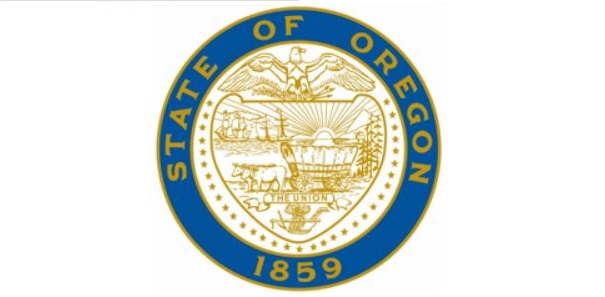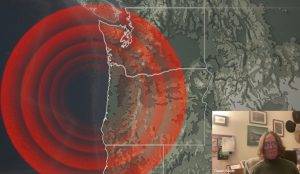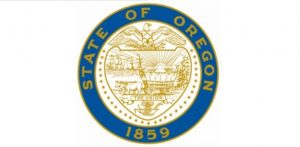Oregon declares fuel emergency after another pipeline shutdown
5 min read
|
Getting your Trinity Audio player ready...
|
from the state of Oregon, Office of the Governor
Gov. Tina Kotek declared a state of emergency Nov. 24 due to potential disruptions in fuel delivery as a result of the second major Olympic Pipeline shutdown in the past three months.
The pipeline supplies more than 90% of Oregon’s transportation fuel, delivering to terminals in Portland, where fuel is distributed throughout the state.
Following ORS 401.165, the governor determined a state of emergency exists across Oregon due to a disruption of Oregon’s primary fuel supply system. Executive Order 25-30 enables a change in the delivery of fuel to maintain adequate fuel supply for the state of Oregon.
Executive Order 25-30 also directs the following actions:
- The Oregon Department of Emergency Management (OEM) will activate the state’s Comprehensive Emergency Management Plan (CEMP) as needed and coordinate necessary access to the use of personnel, equipment, and subject matter expertise of state agencies required to assess, alleviate, respond to, mitigate, and recover from conditions caused by this emergency.
- The Oregon Department of Energy (ODOE), in accordance with ORS 176.809 and the Oregon Fuel Action Plan, will serve as lead for Emergency Support to Fuels and support coordination of state response, including information sharing and liaison between the fuel industry and state response agencies, and other actions identified in the Oregon Fuel Action Plan, and make recommendations to the governor’s office and OEM for any further state response actions, if warranted.
- The Oregon Department of Transportation (ODOT) will provide regulatory relief for commercial motor vehicle operations while providing direct assistance supporting emergency relief efforts related to the pipeline shutdown to include temporary waivers for state-regulated hours-of-service requirements for commercial motor vehicle operations in accordance with ORS 823.012.
This order is issued to ensure a continued adequate supply of fuel in Oregon. As of Nov. 24, Oregon is not experiencing supply constraints. Price gouging during an emergency is unlawful and violations can be reported to the Oregon Department of Justice Consumer Protection Services, which has the authority to investigate unlawful trade practices.
This order shall remain in effect from Nov. 24, 2025, and expires on Dec. 24, 2025 unless extended or terminated earlier by the governor.
The Environmental Quality Commission issued variances to certain requirements in the Clean Fuels Program and Climate Protection Program Nov. 24 as a proactive measure to support continual fuel delivery through alternative methods and reliable supplies in Oregon if the Olympic Pipeline closure continues.
Why did Governor Kotek declare a fuel emergency?
On November 17, 2025, a fuel leak was discovered in Snohomish County, Washington, which required the Olympic Pipeline to shut down for repairs. This pipeline is Oregon’s main source of fuel, and we don’t yet know when it will be back in service. To ensure Oregon continues to have adequate fuel for transportation, emergency services, and aviation, the governor issued an executive order, unlocking the ability to expeditiously bring fuel into the state through alternative methods while the pipeline is being repaired.
What happened to the Olympic Pipeline?
On November 17, 2025, a fuel leak was discovered in Snohomish County, Washington, which required the Olympic Pipeline to shut down for repairs. This is the second time the Olympic Pipeline has faced issues in the last three months.
Will Oregon face a fuel supply shortage?
No, Oregon does not expect to experience a shortage of fuel. While the pipeline is shut down, fuel suppliers can deliver fuel into the state via barge or trucks to ensure communities have the fuel they need. This EO will allow the Oregon Department of Transportation to apply waivers for certain fuel delivery requirements to ensure supply is delivered across the state.
Will this cause a problem with air travel?
There have been reports out of Washington state that the pipeline closure is affecting jet fuel supply to Seattle-Tacoma Airport. Oregon does not expect those challenges at Portland International or other airports as fuel arrives in large quantities via ship directly into the fuel storage hub in northwest Portland, and is then distributed to PDX and other airports as usual. The state is in close coordination with the Port of Portland regarding fuel at PDX airport.
Will the shutdown affect the price at the pump?
Because fuel will be delivered through methods other than the pipeline, Oregonians may see an increase at the pump as a result of the higher-cost delivery methods.
Why did the Environmental Quality Commission issue these variances?
The variances are a proactive measure to support continual fuel delivery in Oregon if the Olympic Pipeline shutdown persists.
How long do these variances last for?
The variances approved by the EQC cover Nov. 24 at 12:01 a.m. through Dec. 1 at 11:59 p.m.
How will I know if the variances change?
The commission granted the DEQ director the ability to adjust these variances, as needed. DEQ will share any updates via our Clean Fuels Program and Climate Protection Program email listservs and the written order will be posted on the Fuel Variance web page.
What does the Clean Fuels Program variance do?
The Clean Fuels Program variance waives the program’s requirements in two ways:
- For fuel suppliers that are not currently subject to the program, the variance temporarily increases the program’s threshold for regulation from a half million gallons of imports to five million gallons.
- For fuel suppliers that are currently subject to the program, imports that are trucked in and directly delivered to gas stations, fleets, and truck stops (also known as imports outside of the bulk system) are exempt for the duration of the outage.
What does the Climate Protection Program variance do?
Fuel suppliers will be able to report additional volumes of regulated fossil fuels imported by truck or rail and directly delivered to gas stations, fleets, and truck stops due to the pipeline closure.
Covered liquid fuel and propane suppliers can request that the anthropogenic greenhouse gas emissions from fuels imported by truck or rail and directly delivered to gas stations, fleets, and truck stops during the variance timeframe are excluded from the definition of covered emissions under the program. There would be no compliance obligations for these emissions. These emissions would also be removed from the methodology used to distribute compliance instruments.




